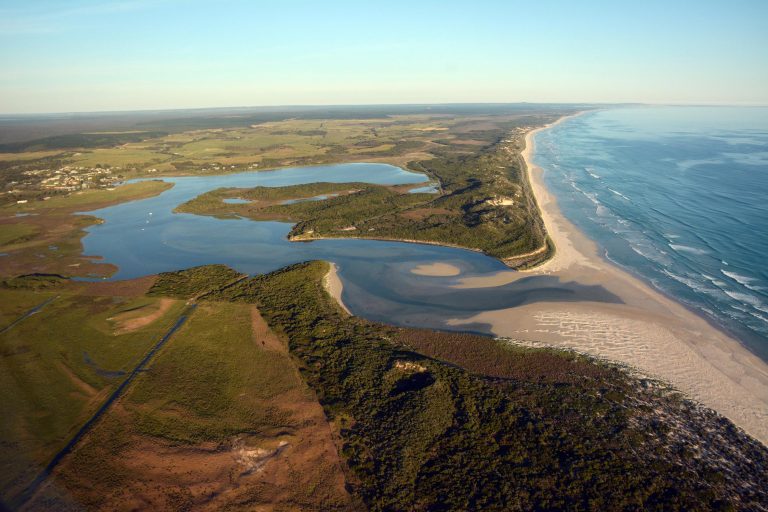Glenelg River Estuary
The Glenelg River estuary is located in the far southwest corner of Victoria. It is the longest estuary in Victoria, extending 75km from its mouth near Nelson, to just downstream of Dartmoor. It has a surface area of approximately 440 ha and a volume of approximately 22,000ML. The estuary flows through the Lower Glenelg National Park and the Discovery Bay Coastal Park. Four kilometres of the estuary lie within South Australia.


The Glenelg River estuary has high natural, social and landscape values, which are recognised by its listing as a heritage river under the Victorian Heritage Rivers Act, 1992. Part of the Lower Glenelg National Park, Discovery Bay Coastal Park and the Nelson Streamside Reserve have recently been listed as a wetland of international importance under the Ramsar Convention on Wetlands.
The estuary is a seasonally closed, salt wedge type estuary. During low flow conditions the salt wedge of the Glenelg River often penetrates over 70km upstream.
The Glenelg is the only estuarine system in Victoria that lies within limestone gorges, with cliffs as high as 40m. The confinement of the estuary to the gorge system means there is no extensive floodplain or associated fringing wetlands until the river nears the coastline. Tributaries of the estuary include Moleside, Glenaulin, Eel and Holloway (Freshwater) Creeks. The estuary is connected to Oxbow Lake via Eel Creek.
Prior to 1906 Piccaninnie Ponds in South Australia was directly connected to the estuary via Freshwater Creek. The bulk of these flows now pass directly into the sea through the dune system inside the South Australian border. Long Swamp was also previously connected to the estuary via Eel Creek. Water from Long Swamp now flows out to sea near Nobles Rocks.
Over forty species of fish have been recorded including high value recreational species and threatened species listed under both the Victorian Flora and Fauna Guarantee Act, 1988 and Commonwealth Environment Protection and Biodiversity Conservation Act, 1999. Ewens pygmy perch (Nannoperca variegata) are known to occur only in the Glenelg River basin and a few locations in South Australia. The Glenelg spiny crayfish (Euastacus bisipinosis) is endemic to the lower sections of south east South Australia and south west Victoria. The Glenelg freshwater mussel (Hyridella glenelgensis) is also endemic to tributaries of the Glenelg River estuary.


